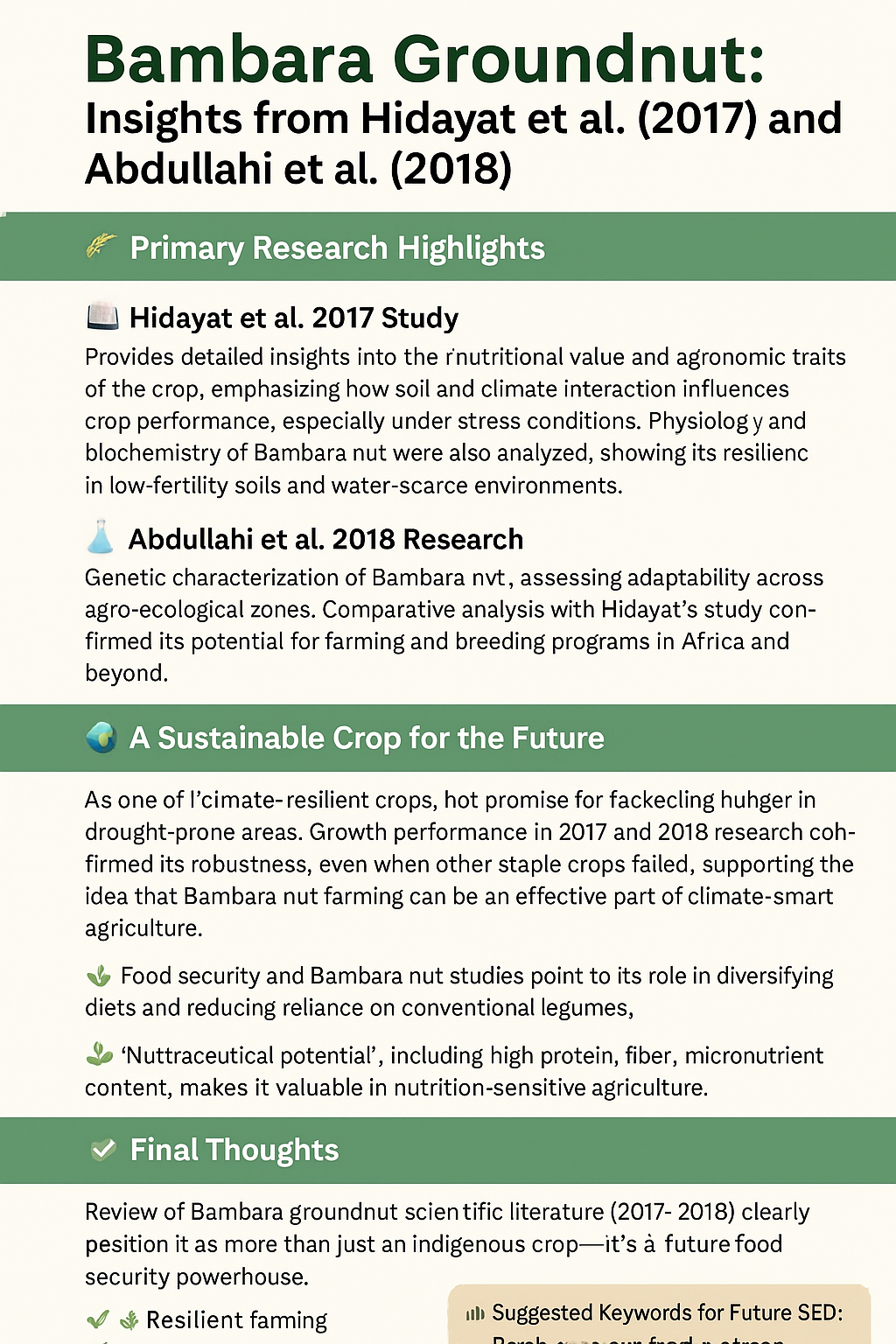Bambara groundnut (Vigna subterranea) is emerging as a climate-resilient crop with immense potential in sustainable agriculture. Recent studies, notably by Hidayat et al. (2017) and Abdullahi et al. (2018), have significantly expanded our understanding of this underutilized legume crop. Their research highlights the nutritional value, drought tolerance, and genetic diversity of Bambara groundnut, making it a viable option for food security in drought-prone areas.

Primary Research Highlights
Hidayat et al. 2017 Study
The Bambara groundnut Hidayat 2017 study provided detailed insights into the nutritional value and agronomic traits of the crop. This research emphasized how soil and climate interaction influences crop performance, especially under stress conditions. The physiology and biochemistry of Bambara nut were also analyzed, showing its resilience in low-fertility soils and water-scarce environments.
Abdullahi et al. 2018 Research
In the Abdullahi et al. 2018 Bambara groundnut traits study, researchers performed a genetic characterization of Bambara nut, assessing its adaptability across various agro-ecological zones. Their comparative analysis of Bambara groundnut studies (Hidayat and Abdullahi) confirmed its potential for farming and breeding programs in Africa and beyond.
A Sustainable Crop for the Future
As one of the most climate-resilient crops, Bambara groundnut holds promise for tackling hunger in drought-prone areas. The growth performance in 2017 and 2018 research confirmed its robustness, even when other staple crops failed. This supports the idea that Bambara nut farming can be an effective part of climate-smart agriculture.
The food security and Bambara nut studies point to its role in diversifying diets and reducing reliance on conventional legumes. Its nutraceutical potential—including high protein, fiber, and micronutrient content—makes it valuable in nutrition-sensitive agriculture.
Genetics & Diversity
One of the most compelling findings from Abdullahi et al. 2018 is the genetic diversity research of Bambara groundnut. This opens new doors for crop improvement and sustainable breeding programs. Coupled with Hidayat et al. 2017 Bambara groundnut review, we now have a clearer picture of its adaptation strategies and morphological characteristics under stress.
Final Thoughts
The review of Bambara groundnut scientific literature (2017–2018) clearly positions it as more than just an indigenous crop—it’s a future food security powerhouse. From agronomic traits of Bambara nut to its sustainability research, both studies validate the growing importance of this African indigenous legume crop.
You may also like to explore these topis
4 powerful dua to stop divorce
Mufti Menk: 12 Fascinating Facts You
